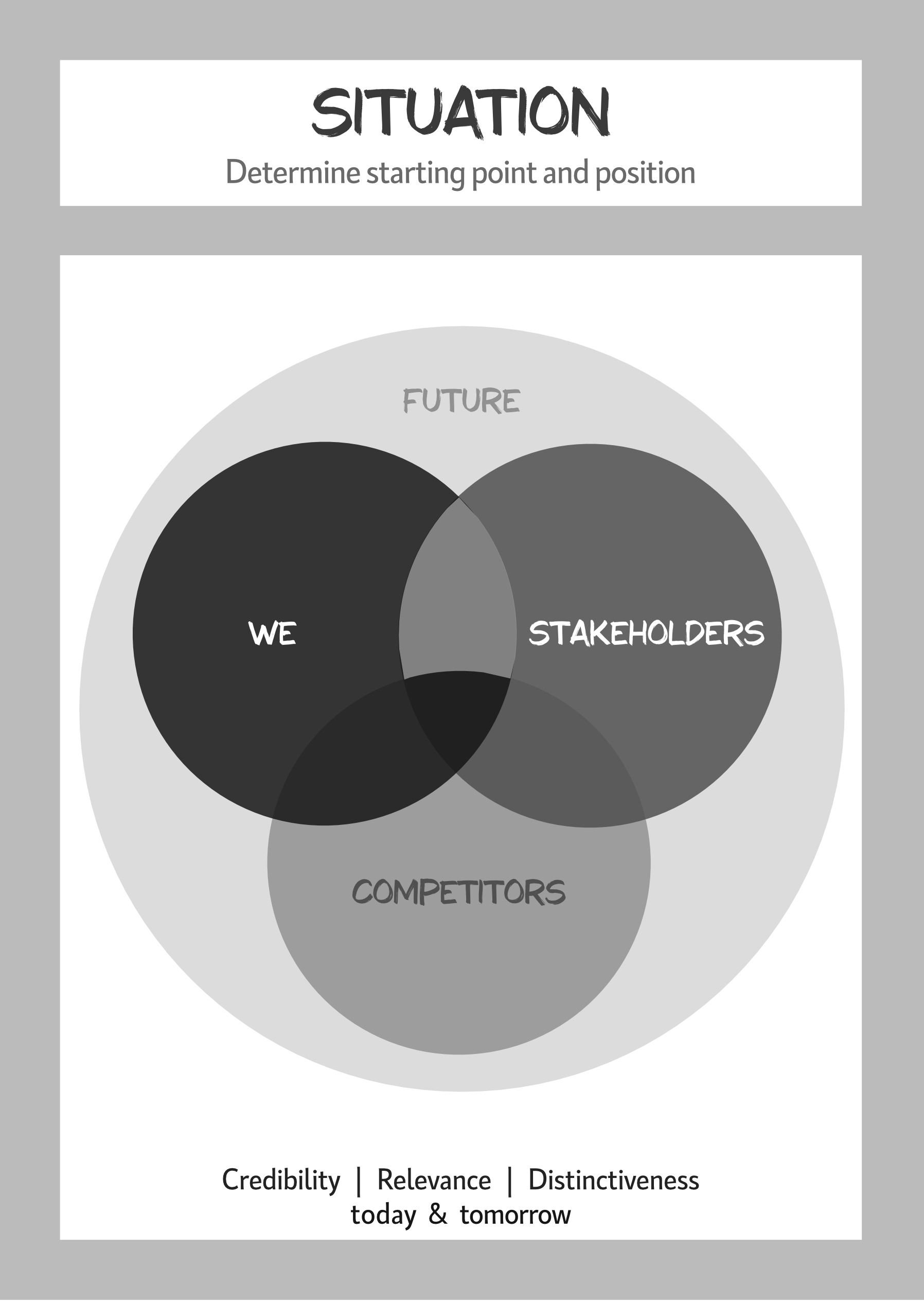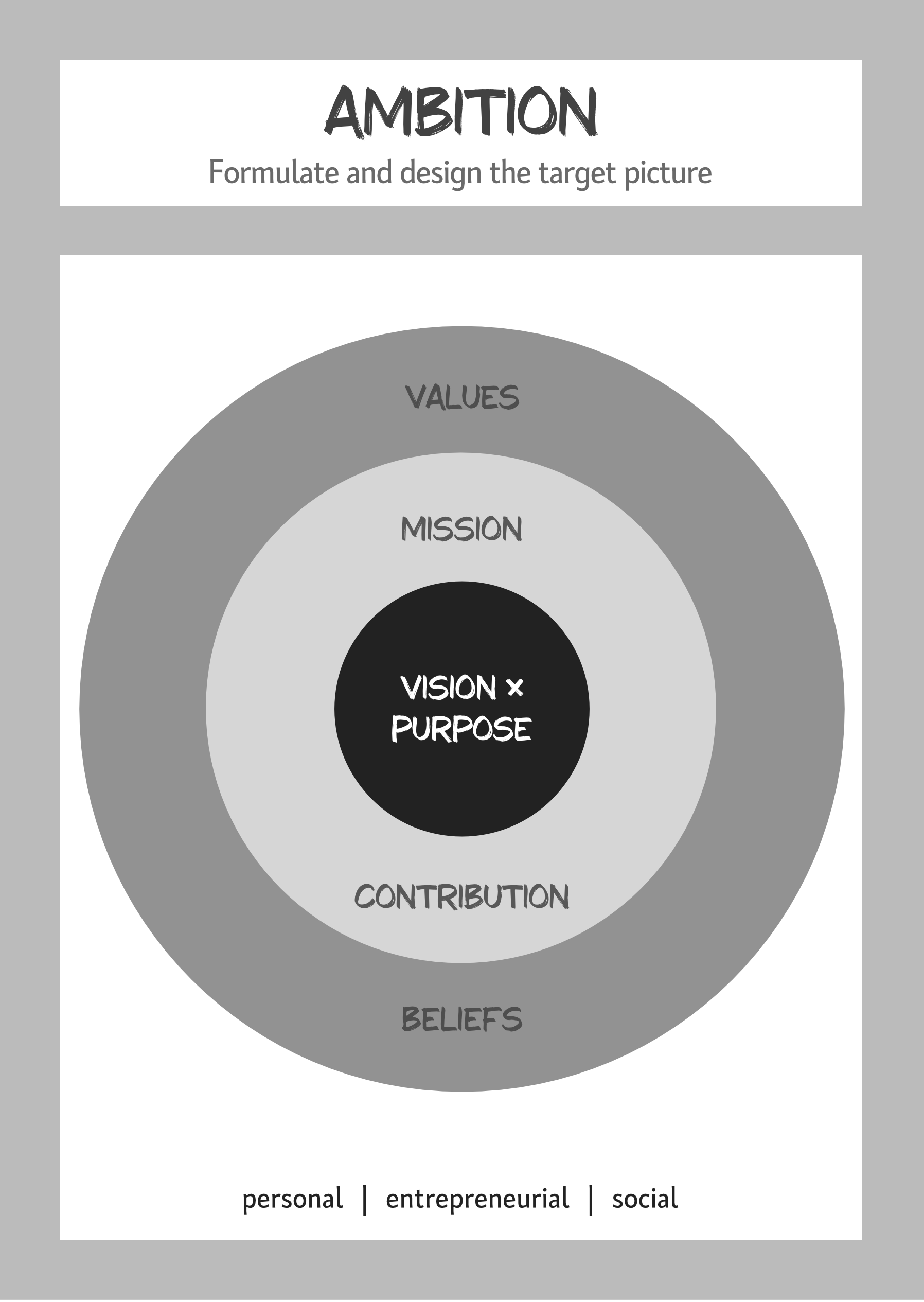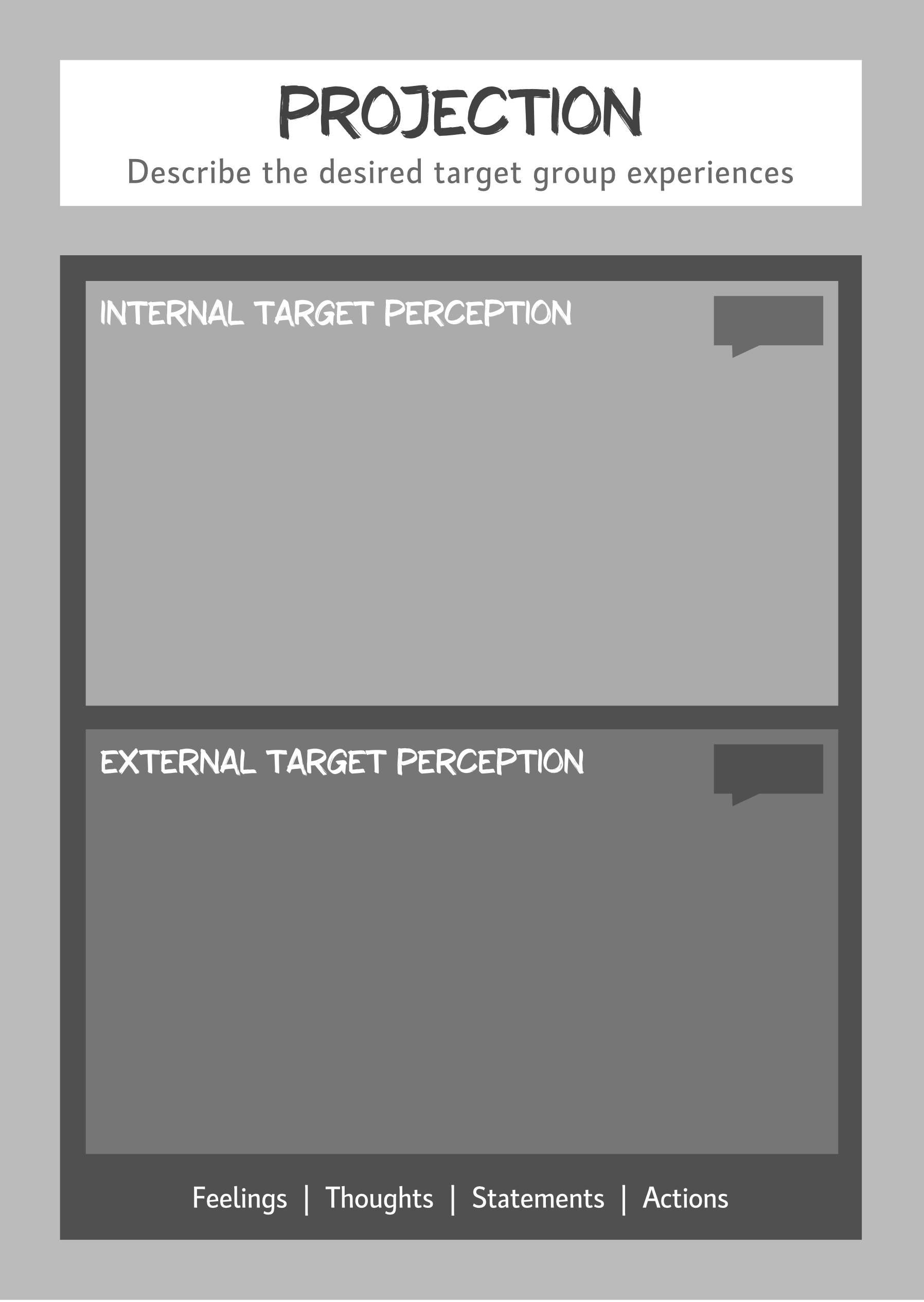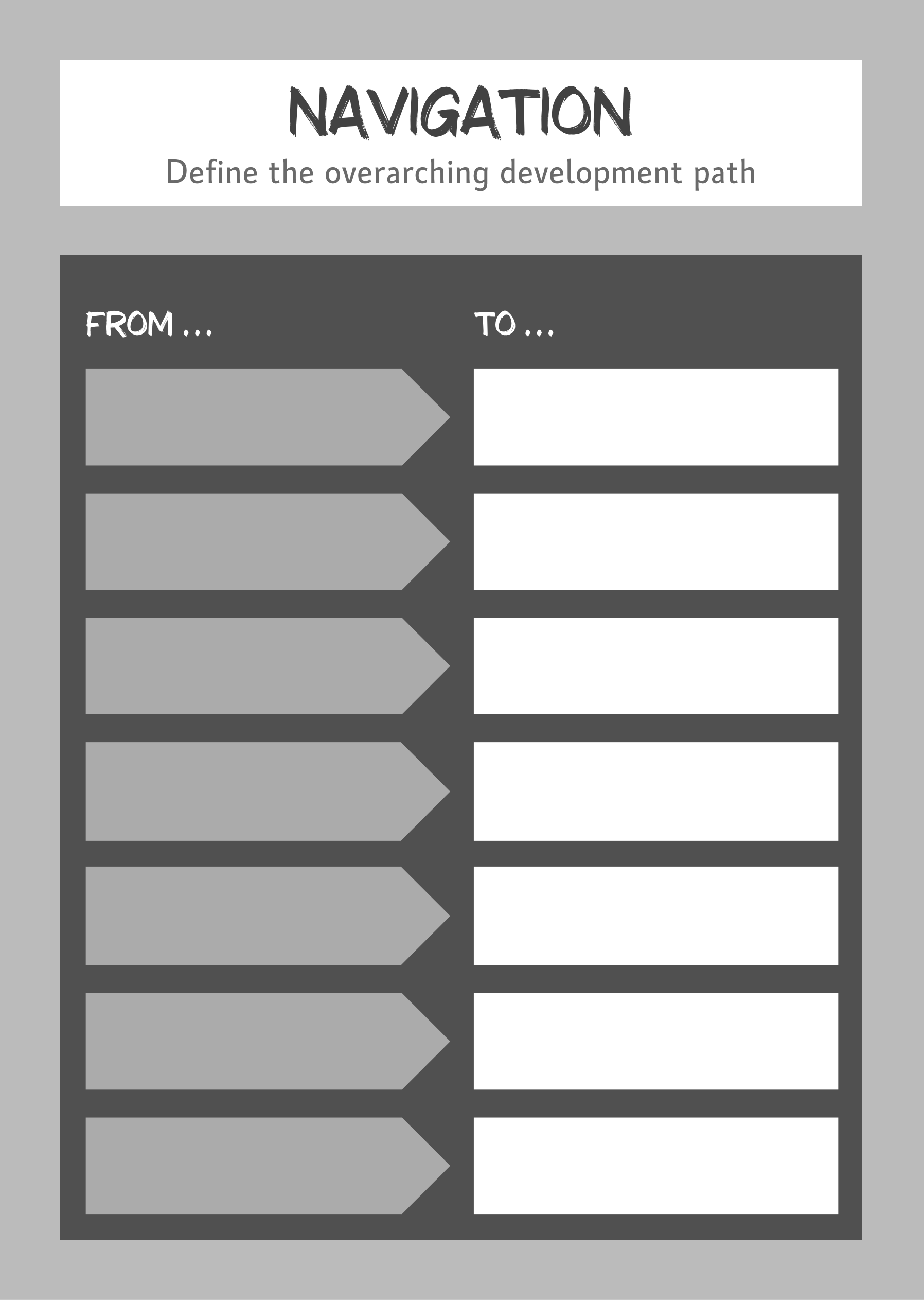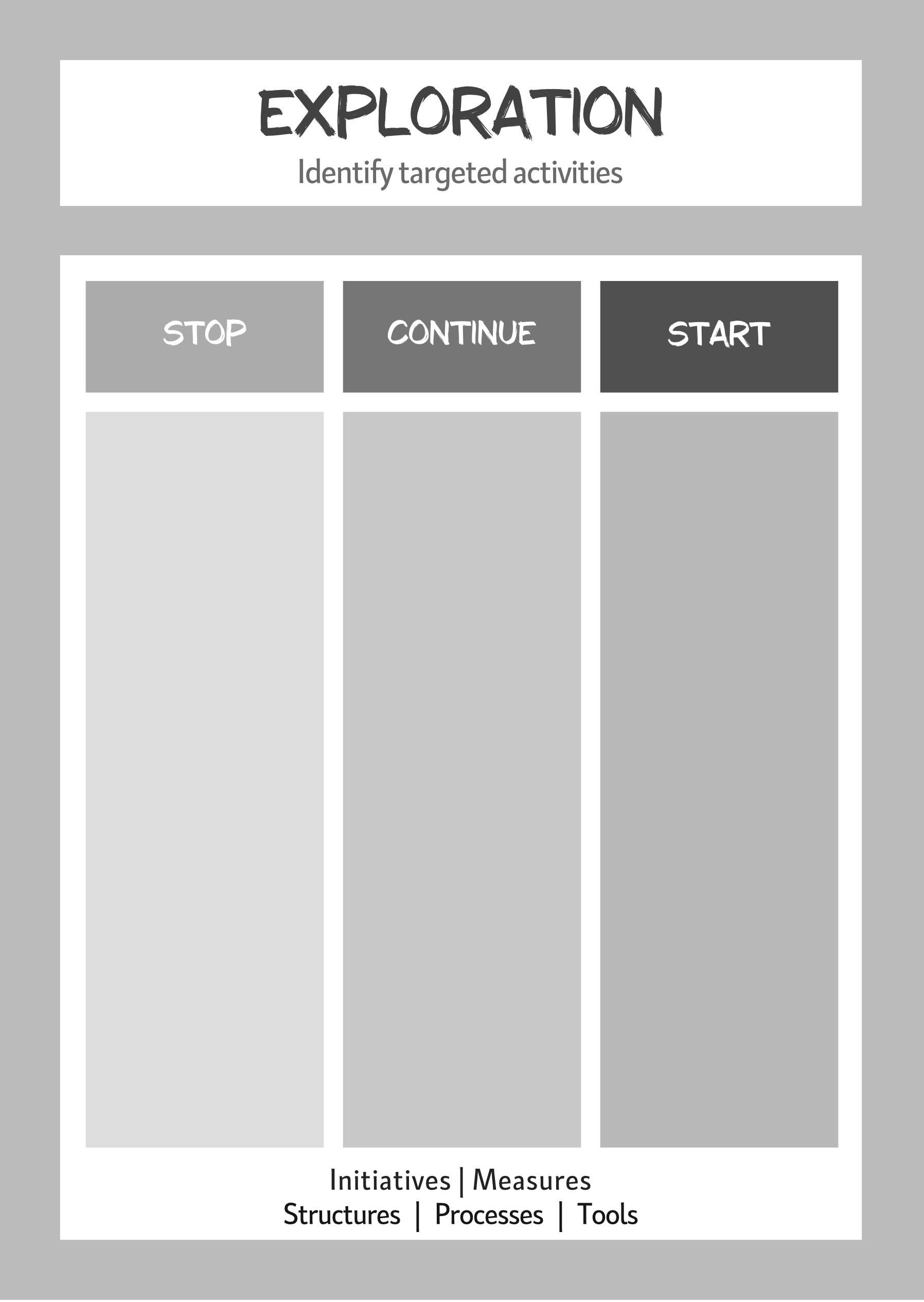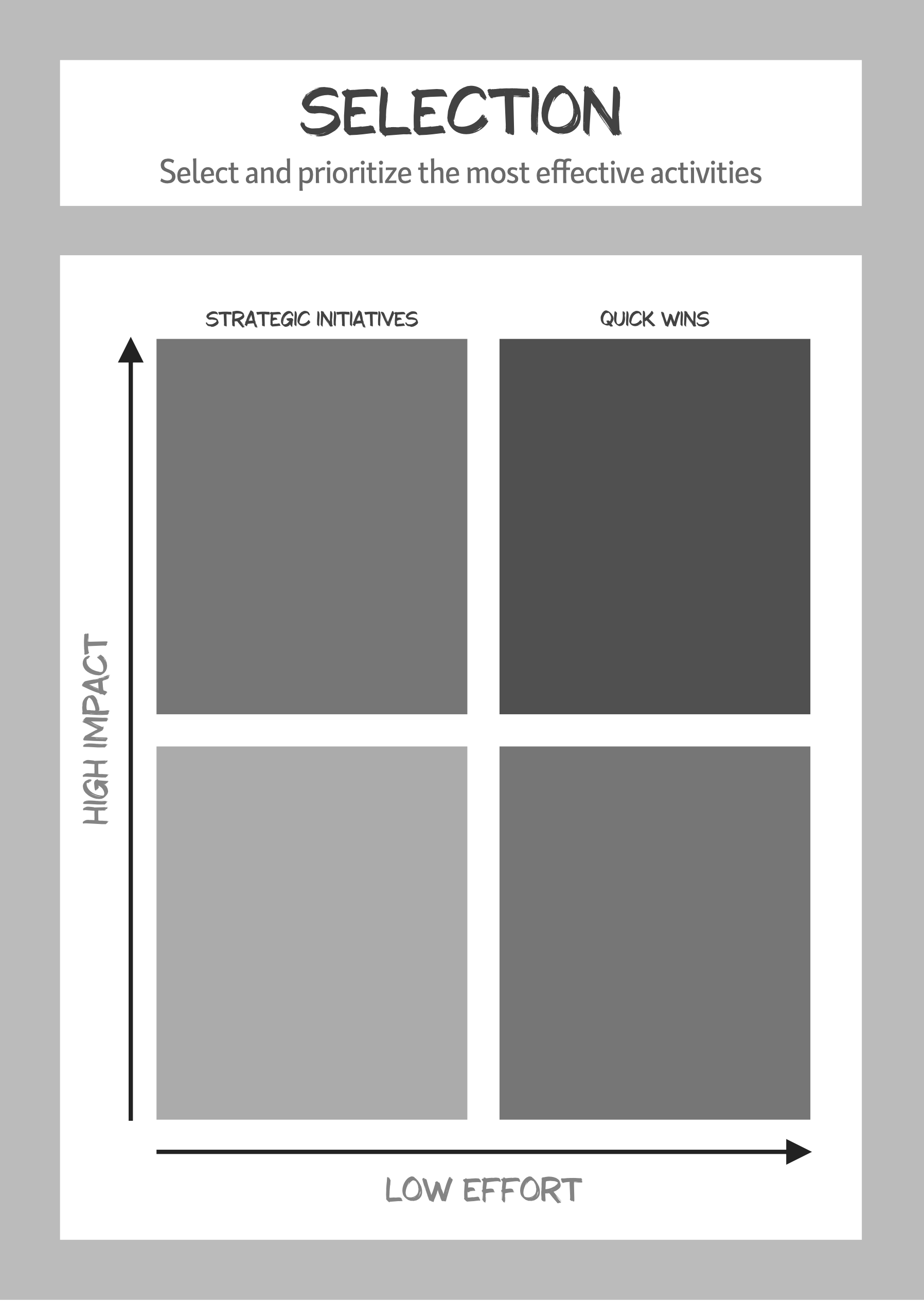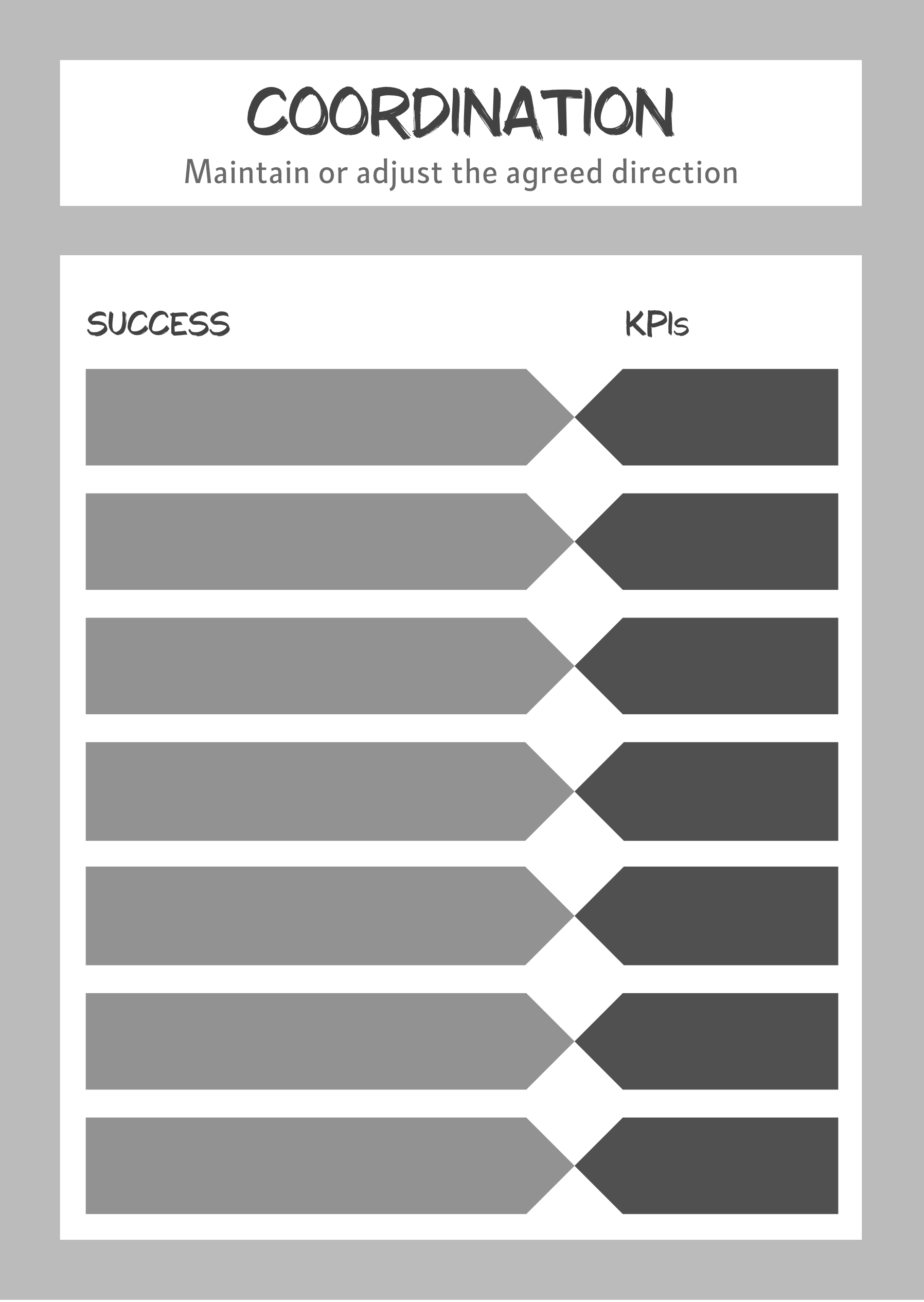Playfully shaping the future
Playful Strategies is a method that is designed to leverage the full potential of a corporate brand and to make its contribution to the company’s success visible and measurable, as well as to manage it in a targeted manner.
Clear strategic direction: By taking an overarching perspective on all brand activities, initiatives and measures can be clearly aligned with corporate objectives as well as selected and prioritized according to their impact.
Effective, measurable implementation: The result is an implementation plan that clearly summarizes the defined brand activities and puts them into an overall context – from quick wins with an immediate effect to strategic initiatives that have a medium and long-term impact.
This enables the value of the brand for successful corporate management to be presented, communicated and leveraged in all areas and at all levels.
The essential 8 steps of Playful Strategies are outlined below.
Step 1: Determine starting point and position
Activities
-
Review and evaluation of existing documents, e.g. cornerstones of the corporate strategy, brand identity, positioning, service portfolio, target group profiles, competitive analyses, employee and customer satisfaction analyses, trend studies
-
Interviews with managers from different areas of the company, e.g. top management, marketing, communication, sales, customer service, HR
-
Workshop with managers from different areas of the company to evaluate, discuss and refine the findings
-
Consolidation of the findings and preparation of a presentation of the results
Results
-
Performance profile of the company
-
Needs profiles of internal and external target groups
-
Competitor profiles
-
Future outlook on the industry and the market
-
Credible, relevant and unique positioning space / target perception space for the brand
Step 2: Formulate and design the target picture
Activities
-
Workshop with top management and selected managers of the company
-
Presentation, discussion and sharpening of the findings from step 1
-
Definition of the company’s entrepreneurial and social ambitions
-
Formulation and design of a target picture for the company, including e.g. vision, mission and values
Results
-
Corporate target picture as a framework for brand development
-
Vision, mission and values
Step 3: Describe the desired target group experiences
Activities
-
Formulation of the target perception for the various internal and external target groups, i.e. the feelings and thoughts that they should associate with the company
Notes
-
The target perception is the sum of the experiences that the target groups have with the company, its employees and its offerings
-
Target groups are e.g. employees, applicants, customer groups, owners/investors, governments/communities, the public
Results
-
Defined target perceptions for the various internal and external target groups as orientation and target for brand management
Step 4: Define the overarching development path
Activities
-
Exploration and definition of key topics, initiatives and measures that are essential for achieving the target perception and increasing the brand impact — and that must be further developed accordingly
-
Selection of the 5-7 topics that have the greatest influence on increasing brand impact, including a brief description of the current situation and the desired ideal situation
Notes
-
The changes can relate to strategic, tactical and operational aspects
-
They can include content, tools, structures and processes
Results
-
Overview of the 5-7 key development paths that are most important for increasing brand impact
Step 5: Identify targeted activities
Activities
-
The development paths from step 4 are used to derive specific initiatives and measures that contribute to achieving the desired target state
-
Stop: Initiatives and measures are selected that do not contribute to achieving the target state and should therefore be stopped
-
Continue: The initiatives and measures that are already contributing effectively to achieving the target today and that are to be continued or adapted if necessary are collected
-
Start: New initiatives and measures that contribute to achieving the target are explored and summarized
Results
-
Overview of initiatives und measures that are to be stopped, continued or started in order to achieve the objectives and increase the impact of the brand
Step 6: Select and prioritize the most effective activities
Activities
-
The identified initiatives and measures from step 5 are sorted and prioritized according to their implementation effort and impact
-
Initiatives and measures with a high impact and low implementation effort are given high priority
-
Initiatives with a high impact and a high implementation effort become strategic initiatives that are implemented step by step
Note
-
In the first step, the impact and cost are estimated on the basis of past experience and assumptions. A more detailed analysis is carried out later on.
Results
-
Prioritized overview of initiatives and measures with the highest impact and lowest implementation costs
-
Overview of quick wins with fast results
-
Overview of strategic initiatives
Step 7: Take the selected path together
Activities
-
The people or departments responsible for implementing the initiatives and measures defined in step 6 are determined
-
The initiatives and measures are planned in a way that allows them to have the greatest possible impact with the lowest possible effort
Results
-
Synchronized schedule for all initiatives and measures for the planning period and outlook for the following or subsequent activities
-
Cross-divisional networking of all company activities
Step 8: Maintain or adjust the agreed direction
Activities
-
In order to continuously manage and ensure the impact of the brand, performance indicators and key performance indicators for the implementation and activation of the brand are derived from the overarching business KPIs
-
Initiatives and measures are aligned with the defined KPIs and their contribution to success is measured accordingly
-
If the impact is low, initiatives and measures are optimized or eliminated and replaced with more effective ones
Note
-
The KPIs are continuously discussed and optimized.
Results
-
Success factors and key performance indicators for the effective implementation and activation of the brand
The main advantages of Playful Strategies at a glance
Internal benefits
-
Common understanding of the brand, its target picture, its impact and its contribution to success
-
Impact-driven and efficient processes and structures
-
Measurable results and conscious management of the brand’s impact
External benefits
-
Systematic focus on the target groups
-
Consistent and contradiction-free brand experiences at all touchpoints with the target groups
-
Optimum brand impact through targeted and synchronized brand activities
Advantages going forward
-
Future-proof content, tools, structures and processes for brand-driven corporate management
-
Impact management with performance indicators that take future developments into account
-
Continuous assurance of the brand’s impact
Both a card game and a Miro board are available for a quick start with Playful Strategies.
Let’s talk about how you can easily get started with playful strategy development and implementation.
